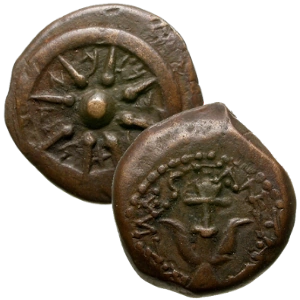The "Widow's Mite" refers to a small, ancient coin that is mentioned in the Bible in the Gospel of Mark 12:41-44 and the Gospel of Luke 21:1-4. The story goes that Jesus observed people making offerings at the temple, and a poor widow came and contributed two small copper coins, which were together worth only a fraction of a denarius, a Roman silver coin.
Here's the passage from Mark 12:41-44 (New International Version):
"Jesus sat down opposite the place where the offerings were put and watched the crowd putting their money into the temple treasury. Many rich people threw in large amounts. But a poor widow came and put in two very small copper coins, worth only a few cents.
Calling his disciples to him, Jesus said, 'Truly I tell you, this poor widow has put more into the treasury than all the others. They all gave out of their wealth; but she, out of her poverty, put in everything—all she had to live on.'"
The "Widow's Mite" has become a symbol of self-sacrifice and generosity, emphasizing the spiritual value of the gift rather than its material worth. The term "mite" itself refers to a small or insignificant amount of money.
The actual coins referred to in the Bible are believed to be lepta, the smallest and least valuable coins in circulation during that time in Judea. These small bronze or copper coins were often used for the payment of minor obligations, and their name, lepton, means "small" or "thin" in Greek.
The story has become a powerful lesson about the true nature of generosity and the importance of giving with a pure and selfless heart. Over the centuries, the widow's mite has been symbolically associated with the concept of sacrificial giving and has inspired many to reflect on the motives behind their charitable acts. It serves as a reminder that generosity is not measured by the size of the gift but by the spirit and intention with which it is given.


